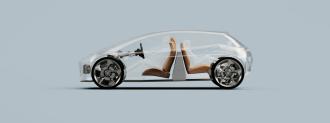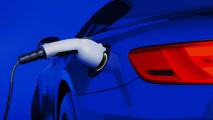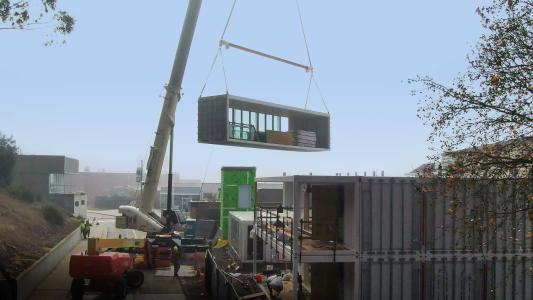U.K. startup Page-Roberts has unveiled a car design concept featuring a vertical EV battery — a unique configuration it claims could improve vehicle efficiency and cut manufacturing costs.
The status quo: Many of today’s EVs are built on what’s known as a “skateboard chassis” because, well, it looks a lot like a skateboard: a flat rectangle with a wheel near each corner.
The EV battery and other driving components go inside the flat part, and the body of the car is then built on top of that platform.
The challenge: This design gives EVs a low center of gravity, which can improve handling, and it also gives automakers the option of creating one chassis for several car models — but it isn’t without drawbacks.
“The skateboard arrangement … results in taller vehicles with increased aerodynamic losses and energy consumption (especially at motorway speeds), extra structure required to protect against impact, and a longer wheelbase to account for the battery,” Freddy Page-Roberts, the startup’s CEO, said in a press release.
“The increased size and weight dramatically inhibit range.”
The vertical EV battery: Instead of placing the EV battery in the floor of a car, Page-Roberts proposes flipping it vertically and placing it behind the front row of seats. In the design concept, the backseat of the car is also flipped, so that anyone sitting in it would be facing the rear of the vehicle.
The configuration is definitely a departure from the norm, but Page-Roberts claims a vertical EV battery would make vehicles lighter and more streamlined, which could increase their efficiency by 30% and cut manufacturing costs by 36%.
“The efficiency translates to less time charging from either longer range or smaller batteries, so pressure on charging points — another key pain point for the industry — will also be reduced,” CTO Mark Simon said.
The cold water: Page-Roberts’ vertical EV battery is just a concept, and there’s no guarantee any automakers will want to actually incorporate the design into their vehicles. Even if they did, a rear-facing backseat might be a turnoff for car buyers.
Still, the EV industry is very much in its beginning stages — fewer than 1% of the vehicles on U.S. roads today are electric — so there’s no reason for automakers to feel locked into the skateboard chassis or any other configuration.
Now is the time for experimentation, and Page-Roberts’ vertical EV battery is a prime example of the kind of outside-the-box thinking that should be happening at this stage of the game.
We’d love to hear from you! If you have a comment about this article or if you have a tip for a future Freethink story, please email us at [email protected].






